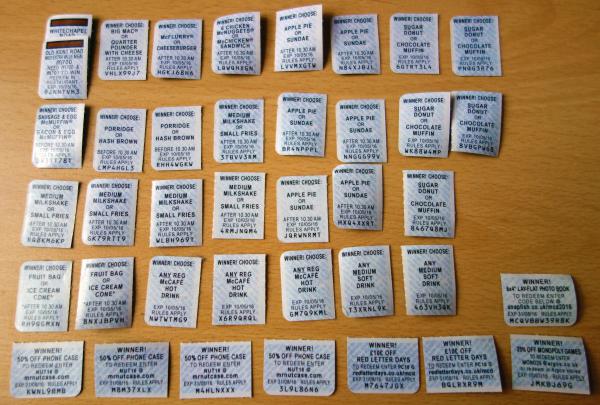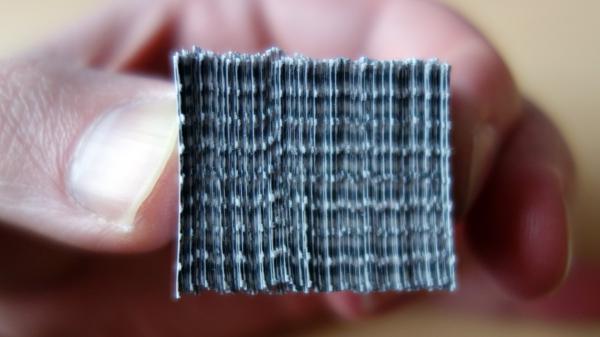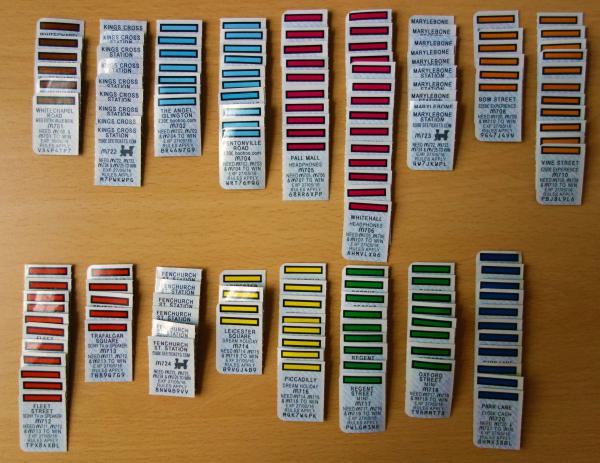Gamification
Since the explosion of video games in the 1980s, companies have been attempting to attract customers by adding a gaming element to their products.
Games are exciting
The main motivating force behind gamification is spending. Customers who are engaged with products will generally spend more, and one of the great methods that works really well is turning every day shopping into a game.
Whether or not you realise it, you're very likely to be part of that game – in the same way that you collect Jiggies in Banjo-Kazooie, you collect things in real life. Coffee cards, Tesco Clubcard points, and even those old Nintendo points from buying games are part of the gamification world. By giving you some form of point system the company is creating a mental sunk cost at the same time as playing on your desire to collect things. Ten stamps on your coffee card? Free coffee! 2000 Nintendo points? Free virtual console download! But you've definitely already paid for your free coffee, and £320 of console games definitely had enough profit to give away a free budget title.
Sophisticated tactics
 Companies will sometimes team up to cross promote their products. You've heard of McDonald's Monopoly, but you may not have realised how old it is – it first started in 1987.
Companies will sometimes team up to cross promote their products. You've heard of McDonald's Monopoly, but you may not have realised how old it is – it first started in 1987.
McDonald's Monopoly is one of the more sophisticated forms of gamification. People like food and collecting things, and most people seem to like Monopoly. Although the promotion has very little to do with the usual gameplay, you collect prizes in the same way that you get to ravage your friends with houses and hotels.
Monopoly is such a strong game asset because it's so widely known and has been around for 80 years that many other companies use it too – I'm personally a fan of the Monopoly branded games on the National Lottery's site.
 Back to McDonald's. Firstly, there's a time limit. This element vastly increases the number of times a customer is likely to purchase a product within a certain period. Secondly, the prizes are potentially never-ending during this period, which is common to most gamification methods, but the difference is extreme – you can win holidays, cars, large value items that most other gamification schemes haven't introduced. The absolute beauty of this method is that the highest value prize tickets may only number one or two, and the probability that they'll be thrown away or go undiscovered is high.
Back to McDonald's. Firstly, there's a time limit. This element vastly increases the number of times a customer is likely to purchase a product within a certain period. Secondly, the prizes are potentially never-ending during this period, which is common to most gamification methods, but the difference is extreme – you can win holidays, cars, large value items that most other gamification schemes haven't introduced. The absolute beauty of this method is that the highest value prize tickets may only number one or two, and the probability that they'll be thrown away or go undiscovered is high.
 I spent last March eating at McDonald's almost every day (I lost weight, make of that what you will) and collected a good few low value prizes, many of which went unredeemed. As you've probably guessed by now I didn't win any of the big prizes but you can see from the images how it's done – the winning property tokens are all the same, and known to gamers as 'rares'.
I spent last March eating at McDonald's almost every day (I lost weight, make of that what you will) and collected a good few low value prizes, many of which went unredeemed. As you've probably guessed by now I didn't win any of the big prizes but you can see from the images how it's done – the winning property tokens are all the same, and known to gamers as 'rares'.
Rares change on an annual basis so it usually takes a few days before someone like me comes along to work out what they all are. We know we're playing the game, but we can't help ourselves – we're addicted.
McDonald's Monopoly returns to restaurants 22nd March to 2nd May 2017.
Subtle tactics
How many steps are you supposed to walk in a day? How many portions of fruit and veg are you supposed to have? How many glasses of water are you supposed to drink? If you answered 10,000, 5, and 8 – you've been had. They're all subtle marketing tactics, some of them based on vague medical advice, but have absolutely no basis in science.
Fitness is big in marketing right now, and technology is the current fitness fad. What better way to track your no basis in science 10,000 steps than a several hundred pound watch? But people will get bored after a few weeks, right? No! We give them awards and badges – we gamify fitness. This gamification is largely based around keeping you interested and increasing the chances that you'll buy the next product, even though the current one is perfectly acceptable, because of subtle improvements.
Those improvements are often the sort of things that people will say "this should have been in the first version" and they'd be right – planned obsolescence is also big in the technology industry to drive sales. This in itself is a form of gamification because you'll always give a forlorn look at a better product, and probably end up buying it.
